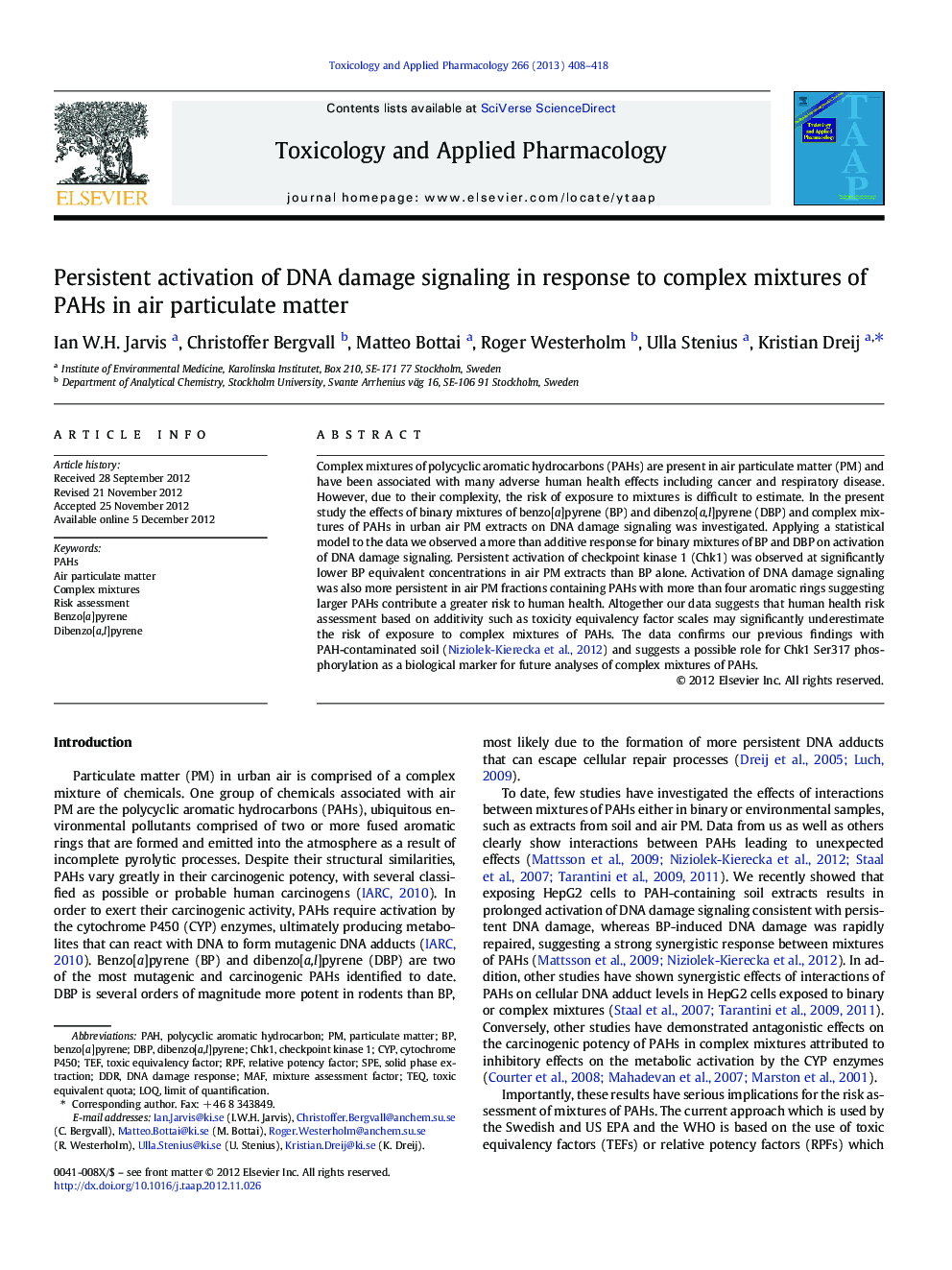| Article ID | Journal | Published Year | Pages | File Type |
|---|---|---|---|---|
| 2569324 | Toxicology and Applied Pharmacology | 2013 | 11 Pages |
Complex mixtures of polycyclic aromatic hydrocarbons (PAHs) are present in air particulate matter (PM) and have been associated with many adverse human health effects including cancer and respiratory disease. However, due to their complexity, the risk of exposure to mixtures is difficult to estimate. In the present study the effects of binary mixtures of benzo[a]pyrene (BP) and dibenzo[a,l]pyrene (DBP) and complex mixtures of PAHs in urban air PM extracts on DNA damage signaling was investigated. Applying a statistical model to the data we observed a more than additive response for binary mixtures of BP and DBP on activation of DNA damage signaling. Persistent activation of checkpoint kinase 1 (Chk1) was observed at significantly lower BP equivalent concentrations in air PM extracts than BP alone. Activation of DNA damage signaling was also more persistent in air PM fractions containing PAHs with more than four aromatic rings suggesting larger PAHs contribute a greater risk to human health. Altogether our data suggests that human health risk assessment based on additivity such as toxicity equivalency factor scales may significantly underestimate the risk of exposure to complex mixtures of PAHs. The data confirms our previous findings with PAH-contaminated soil ( Niziolek-Kierecka et al., 2012) and suggests a possible role for Chk1 Ser317 phosphorylation as a biological marker for future analyses of complex mixtures of PAHs.
► Benzo[a]pyrene (BP), dibenzo[a,l]pyrene (DBP) and air PM PAH extracts were compared. ► Binary mixture of BP and DBP induced a more than additive DNA damage response. ► Air PM PAH extracts were more potent than toxicity equivalency factor estimates. ► Larger PAHs (> 4 rings) contribute more to the genotoxicity of PAHs in air PM. ► Chk1 is a sensitive marker for persistent activation of DNA damage signaling from PAH mixtures.
